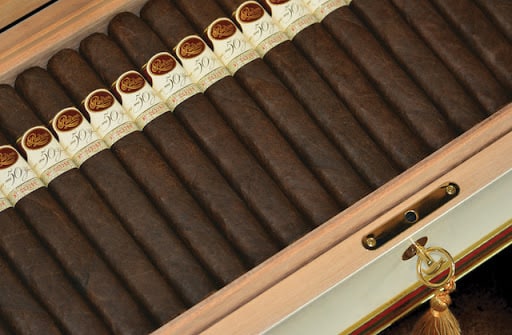Few things in the cigar world are as galvanizing as the box-pressed cigar. Unlike the ubiquitous, traditional round cigars, box-pressed cigars are rectangular in shape. They have inspired love-hate relationships among avid smokers. They can also be found in the best cigar lounges around the country and usually accompanied by a heated debate.
The History of the Box-Pressed Cigar
LeBron James sported a box-pressed cigar in a social media post and unfamiliar fans clamored to know what he was smoking. He responded that he has smoked these cigars forever. Forever, as it turned out, traces back to the 1959 pre-embargo Cuban cigars. The specific shape allowed for maximum storage and packing inside the cigar boxes. This also prevented potential damage from rolling around in the box during transportation by ship.
How are Box-Pressed Cigars Made?
Box-pressed cigars are cigars that begin like traditional round cigars – Parejos. Producers pack them into a traditional box while the cigars are still moist and malleable. The box receives gradual pressure from a hand-cranked press until the cigars form into a rectangular shape. Trunk pressing is more labor-intensive and involves rotating the cigar every twelve hours to form its shape. They are difficult to replicate, but offer practicality; trophy cigars can’t roll off tables when lit!
When Did They Become Popular?
During the big, U.S. cigar boom of the 1990s, Padron launched the box-pressed Padron 1964 Anniversary Series cigar. Padron created it as a special blend to celebrate the 30th anniversary of the company’s founding but intended it as a limited release. It was a blockbuster release for Padron, and immediately beloved by trophy collectors. Other producers immediately followed suit, offering various sizes and shapes.
Cutting and Lighting
One complaint is the difficulty in cutting a box-pressed cigar. Because of the shape, most traditional cutters won’t work. A guillotine works for some box-pressed cigars due to their traditional tapered torpedo shape. But for a large gauge, true square cigar, traditional cigar scissors, or a punch is the preferred method. It is important that the cigars are stored properly because the cap can crack very easily if too much pressure is applied when using the punch. Additionally, when lighting them, they need to be rotated completely to ensure an even burn.
Do They Taste Differently?
They may look different, but all that really matters is taste. The square shape typically leads to a slower, cooler burn, releasing more flavors when compared to traditional cigars. Your lips don’t create a seal when inhaling. Instead, your mouth draws air in with it, along with more flavor for your palate. It’s similar to the way you taste wine. Like any good cigar, it’s all about the producer’s attention to quality control.
Box-Pressed Cigars are in Fashion
While the debate rages among cigar smokers, top producers have all answered back, contributing to the square cigar lifestyle. Oliva, Fuente, My Father, La Aroma de Cuba, and Rocky Patel all produce box-pressed cigars that have scored highly in Cigar Aficionado. Iron Man, Robert Downey Jr., has been spotted smoking the My Father Le Bijou 1922 while on set. Kevin Hart has sported a square Rocky Patel in a recent fashion shoot in California. It’s just another example of why one size doesn’t always fit all when it comes to cigars.
Photo credit: Padron/padron.com


